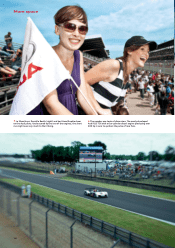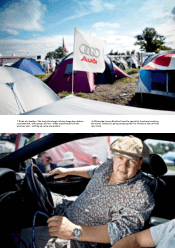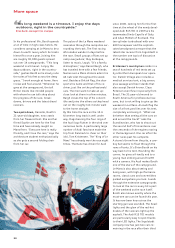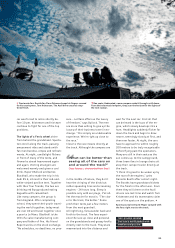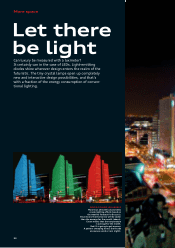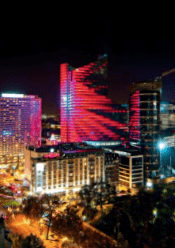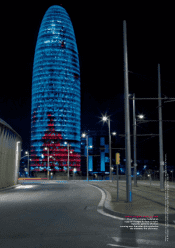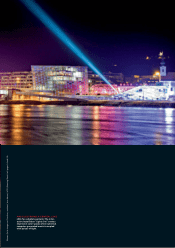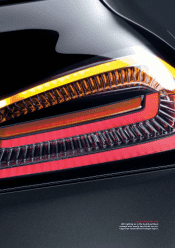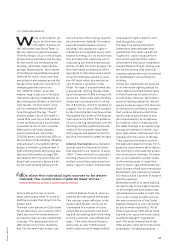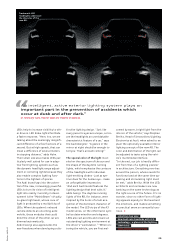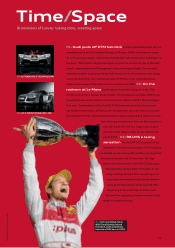Audi 2009 Annual Report Download - page 31
Download and view the complete annual report
Please find page 31 of the 2009 Audi annual report below. You can navigate through the pages in the report by either clicking on the pages listed below, or by using the keyword search tool below to find specific information within the annual report.
More space
however. “Until now I always had to
consider how to conceal large lamps
or how to integrate them into the ar-
chitecture. LEDs allow the individual
light sources to be decentralized; the
construction material itself shines.”
The new LEDs appeal not only to ar-
chitects, but also to the designers at
Audi, for whom the subject of light
has always been a part of their core
business. “We certainly draw ideas
and inspiration from the intelligent
lighting concepts of modern architec-
ture,” says André Georgi, the designer
responsible for lighting systems at
Audi. The Ingolstadt carmaker was
also the first in the industry to recog-
nize the enormous potential of LED
lighting technology. Audi introduced
LED daytime running lights in 2004,
which have since become a brand
trademark. The R8 has been available
with headlights based exclusively on
light-emitting diodes since spring
2008, and the flagship of the Audi
fleet, the recently introduced new A8,
can also be ordered with full LED
lighting. “That gives us a four to five-
year head start on innovation,” says
Dr. Wolfgang Huhn, Head of Light
and Visibility at AUDI AG, as he
demonstrates the structure and func-
tion of the latest-generation full LED
headlight with 76 LED light sources
in his research laboratory. Technically
impressive, highly aesthetic and a
textbook example of an eco-innova-
tion, as LEDs are hard to beat when it
comes to energy efficiency. A car
equipped with conventional halogen
lights uses an average of 130 watts
of energy. This energy is provided by
the alternator and thus is reflected in
higher fuel consumption. The system-
atic use of LED lighting reduces this
value to roughly one third. “The dif-
ference corresponds to nearly a
quarter liter of gasoline per 100 kilo-
meters. That doesn’t sound like much
until you extrapolate it out to many
millions of cars and kilometers dri-
ven,” says Huhn. The difference is
particularly dramatic with daytime
running lights, which will be manda-
tory throughout Europe starting in
2011. A conventional low beam
headlight consumes 10 to 20 times
as much energy as the LED daytime
running light on an Audi.
But low power consumption is far
from the only advantage of LEDs.
The future belongs to headlights that
think with the driver. “An intelligent,
active exterior lighting system plays
an important part in the prevention
of accidents which occur at dusk and
after dark,” explains Huhn. As day-
time running lights, for instance,
The full-LED headlight of the
A8 in detail
01 Reflector for highway beam and
high beam
02 Controllers for turn signals, parking
lights and daytime running lights
03 Controller for turning lights and
all-weather lights
04 Controller for low beam, high beam
and highway beam
05 Low beam light group
(10 light modules)
06 Aperture for low beam
07 Flex board for turn signals, parking
lights and daytime running lights
08 Thick-wall optics for parking lights, day-
time running lights and turn signals
09 Reflector for turning lights and all-
weather lights
09
01
07
06
08
TECHNICAL
INFORMATION
LEDs, standing for light-emitting
diodes, are tiny semiconducting
crystals that convert electricity
directly into light. LEDs enable the
temperature and the color spectrum
of the light to be changed. The
light’s color is determined by the
choice of the semiconductor materi-
al and targeted contamination with
foreign atoms such as phosphorus
or gallium. For decades LEDs led a
niche existence as red flashing
lights in electronic devices, but in
the meantime there are high-effi-
ciency LEDs ranging from infrared
to ultraviolet. Furthermore, LEDs
can be embedded in other materi-
als. The latest generation of LEDs,
such as those found in current Audi
models, have a service life of up to
50,000 hours and are practically
non-wearing. They now yield 50
lumens of light power per watt of
electricity applied. In comparison,
an incandescent bulb achieves less
than half of this value. There is still
plenty of untapped potential in
LEDs, however. It is only at around
350 lumens per watt that all of the
electrical energy is converted into
light.
03
04
05
02


